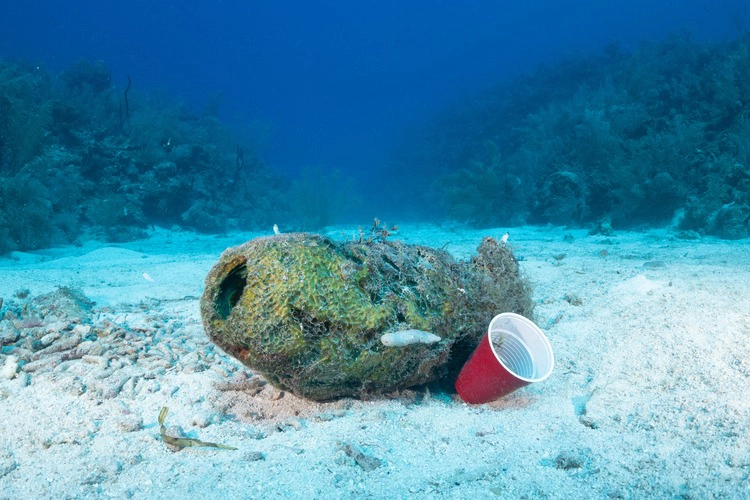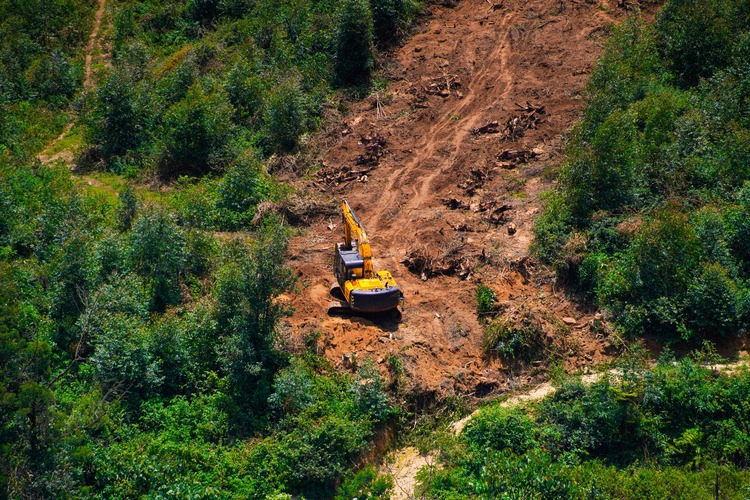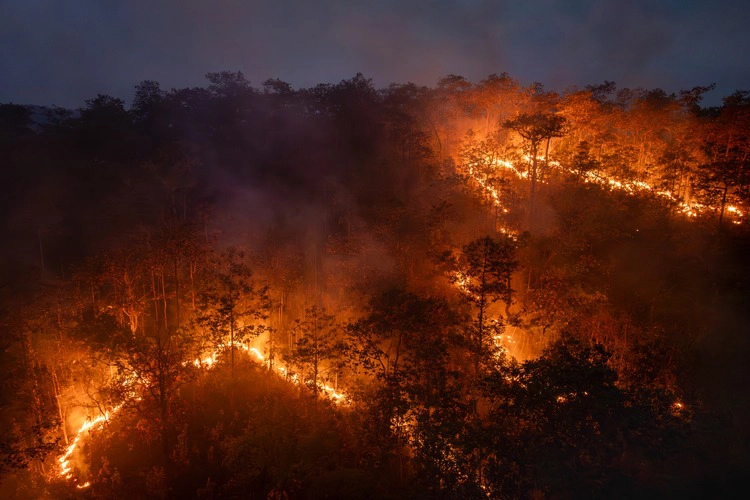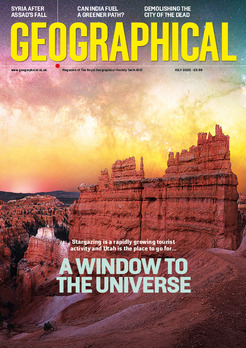
From breaking down confusing acronyms to the difference between blue and black carbon, find out exactly what certain climate terms mean
By
Ecocide, tipping point, net zero – we’ve all heard these terms before, but do we know exactly what they mean? Find out ten of the most commonly misunderstood geographical terms below along with a brief definition, so you can stay on top of all the jargon.
Click on the climate terms below to find out their meaning:
Blue carbon

Around 55 per cent of individuals surveyed in a recent Hello Hydrogen survey didn’t know what this term meant. Blue carbon refers to the carbon captured by the world’s oceans and coastal ecosystems. Seagrass, mangroves and salt marshes – all coastal systems found underwater – are able to take up harmful carbon dioxide gases that contribute towards global warming. By storing this blue carbon, these coastal systems act as carbon sinks that ultimately reduce the quantity of carbon dioxide gases in the atmosphere.
Black carbon
Black carbon – otherwise known as soot – is an air pollutant with a significant negative impact upon human health, ecosystems and the world’s climate. It is formed by the incomplete burning of wood and fossil fuels, a process which also creates carbon dioxide, carbon monoxide and organic compounds. Globally, household energy contributes to 43 per cent of black carbon emissions. 52 per cent of those surveyed were unsure of the meaning of black carbon.
Carbon capture & storage (CCS)

Carbon capture & storage, or CCS, is a process by which carbon dioxide in the atmosphere can be reduced. CO2 emissions from industrial processes – such as steel and cement production – are captured before being transported via ships or pipelines to storage deep underground, often performed by injecting the carbon dioxide into geological formations. 31 per cent of surveyed individuals did not know what CCS referred to.
Chloroflourocarbons (CFCs)
39 per cent of those surveyed did not know the meaning of CFCs. The acronym stands for chloroflourocarbons: nontoxic, nonflammable chemicals that have been previously used to manufacture aerosol sprays, blowing agents for foams, solvents and refrigerants. The production of CFCs was banned worldwide in 2010 following concerns over their role in destroying the ozone-layer. However, reports of an increased presence of the chemicals in the atmosphere between 2010–2020 suggests some companies may still be using or producing CFCs illegally.
Circular economy
A circular economy is an environmentally-friendly approach to manufacturing, with 80 per cent of survey responders not aware of its meaning. It ensures that all products remain in circulation for as long as possible, as well as eliminating any waste by creating better systems, products and designs. Key components of a circular economy also include reduced material use, repurposing waste products to be used as resources for new materials and products, as well as ensuring products are less resource intensive.
CO2e
CO2e stands for carbon dioxide equivalent. It is a measure used to compare the emissions from various greenhouse gases based on their global-warming potential, by converting quantities of other gases to the same amount of carbon dioxide. As an example, the GWP of methane is 25. This means that emitting 1 million metric tonnes of methane is equivalent to 25 metric tonnes of carbon dioxide.
Ecocide

Ecocide refers to any unlawful acts that contribute towards the severe, widespread or long-term damage to the environment. Examples include fracking, the Bhopal disaster of 1984 – where more than 40 tons of methyl isocyanate gas was leaked from a factory, killing 3800 people instantly – as well as the use of Clothianidin pesticide upon bee colonies. The term ‘ecocide’ was first coined in the 1970s during the Vietnam War, after the US military used Agent Orange to destroy cover and crops of troops.
Net zero
Net zero refers to a balance between the quantity of greenhouse gases produced, and the quantity removed from the atmosphere – an important equivalent to ensure that global warming does not increase. 52 per cent of individuals surveyed did not know the term.
Net zero is different from the term ‘carbon neutral’, which refers to an ambition – often that of a company – to limit future carbon emissions. Instead, net zero hopes to achieve to the reduction of all greenhouse gases, including methane and nitrous oxide. Any net zero targets must also align with the 1.5°C global reduction in temperatures as set out by the Paris Agreement, whereas carbon neutrality is a much more unspecific and broad term.
Ocean dead zones
38 per cent of survey respondents did not know what ocean dead zones were. An ocean dead zone is characterised by a reduced level of oxygen in the water – known as hypoxia – which causes marine life to die, or move to other more oxygen-rich habitats. Hypoxic zones can occur naturally, but human activity such as pollution can increase the risk of dead zones forming. Often, nutrients within pollution cause overgrowth of algae, with in turn decomposes – a process that requires oxygen and takes it away from surviving marine life.
Tipping point

In climate terms, a tipping point is a critical threshold which, when crossed, can cause significant and permanent damage to a particular system. For example, rather than an increase in greenhouse gases causing marginally hotter heatwaves, these increases may instead lead to a complete shift: like a rainforest turning into a savannah. The crossing of one tipping point may also lead to an increased likelihood for other thresholds to be passed. 40 per cent of those surveyed were unsure of its meaning.




